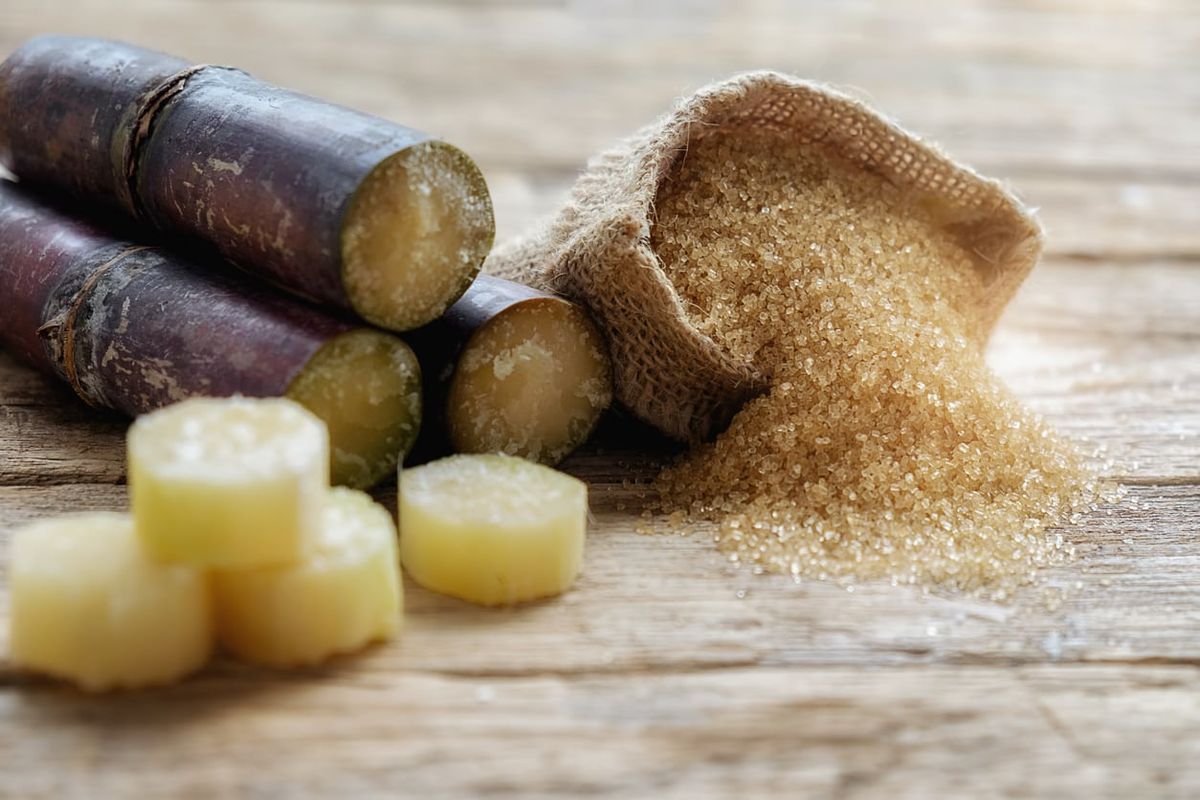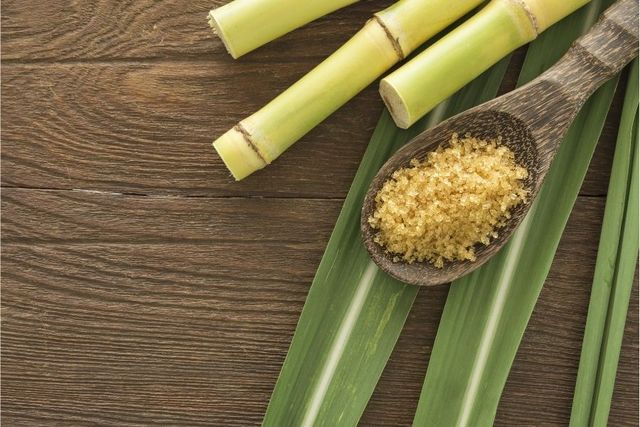10 Surprising Ways to Answer What Are Sugar Canes Used For
All Regarding Sugar Canes: What Are Sugar Canes Utilized For and Their Role in Worldwide Agriculture?
Sugar walking canes work as a cornerstone of global farming, primarily identified for their function in sugar production. They also contribute to the development of by-products like molasses and ethanol. These elements not just sustain various industries yet additionally impact economic stability in rural regions. Nonetheless, the growing of sugar canes deals with substantial environmental obstacles. Recognizing their diverse duty motivates further expedition into their agricultural techniques and sustainability efforts.
The Agricultural Process of Sugar Walking Cane Cultivation
Sugar cane cultivation might vary by region, the essential agricultural procedure continues to be regular. The very first step involves choosing high-yielding varieties suitable for regional environments. Preparation of the soil is vital, often calling for tillage and the addition of fertilizers to improve fertility. Growing typically takes place during the wet period, with farmers making use of either whole stalks or cuttings to develop brand-new crops.As the plants expand, they require diligent care, including weed control, insect management, and watering, relying on the environmental problems. Farmers keep an eye on the sugar walking stick's growth cycle, which generally extends 10 to 24 months, prior to collecting. Harvesting is labor-intensive, often carried out by hand or with specialized machinery, making sure minimal damages to the stalks. Adhering to harvest, the walking cane is moved to refining facilities. This meticulous cultivation procedure not just sustains neighborhood economic climates however also plays a significant role in global agricultural methods, adding to food and energy supplies.
Sugar Manufacturing: From Cane to Crystal
The journey of sugar production starts the moment freshly collected sugar walking cane gets to processing centers. The very first step entails washing and slicing the walking cane to prepare it for removal. Making use of high-pressure rollers, the juice is drawn out from the crushed walking cane, leading to a wonderful liquid called sugarcane juice. This juice undertakes information, where pollutants are removed through the addition of lime and heat.Next, the cleared up juice is concentrated by steaming it down to produce a thick syrup. This syrup is after that taken shape by cooling, enabling sugar crystals to create. The taken shape sugar is separated from the continuing to be syrup, referred to as molasses, with centrifugation.Finally, the sugar crystals are cleaned and dried out, resulting in the acquainted granulated sugar (What Are Sugar Canes Used For). This procedure transforms raw sugar walking cane right into a product that is important to various cooking and industrial applications, highlighting the relevance of sugar in international agriculture
Biofuels and Sugar Canes: A Lasting Future
As the globe progressively seeks sustainable power remedies, sugar walking sticks have emerged as an encouraging source for biofuels. The biomass originated from sugar walking canes can be transformed into ethanol, a sustainable fuel alternative that noticeably lowers greenhouse gas exhausts compared to nonrenewable fuel sources. This procedure not just provides a cleaner energy source yet likewise promotes energy independence for several countries.In addition, sugar cane farming supports rural economic climates by developing work in both farming and biofuel production sectors. Using sugar canes for biofuel production also motivates farming diversification, which can improve soil wellness and decrease dependency on solitary plants. Furthermore, the by-products of sugar walking stick handling can be used for electrical energy generation, additionally adding to a sustainable energy cycle. As countries endeavor to satisfy renewable resource targets, sugar walking canes are positioned to play a necessary function in shaping an extra lasting future in the biofuel landscape.

The Role of Sugar Canes in Beverage Production
Sugar walking sticks play a considerable duty in beverage manufacturing, functioning as a main active ingredient in rum and adding to the sweetness of several soft drinks. Furthermore, their all-natural juices are used in various beverages, boosting flavor and appeal. This convenience highlights the importance of sugar canes in the worldwide beverage industry.
Sugar Cane in Rum
Rum manufacturing is delicately linked to the farming of sugar walking stick, a crucial crop that gives the essential fermentable sugars needed for fermentation. This procedure starts with the removal of juice from harvested sugar walking sticks, which is then either fermented straight or refined right into molasses. Yeast is included to transform the sugars into alcohol, resulting in a diverse series of rum designs, from light to dark selections. The geographical region where the sugar cane is grown substantially affects the flavor profile of the rum, with variables such as soil type and environment having fun important duties. Countries like Barbados, Jamaica, and Cuba are renowned for their rum manufacturing, showing the social and historical significance of sugar walking stick within the global drink industry.
Soft Drinks Sugar Resource

All-natural Juice Manufacturing Utilizes
In enhancement to its substantial role in soda production, sugar cane is additionally essential in the all-natural juice industry. The juice extracted from sugar cane, called walking stick juice, is commemorated for its natural sweet taste and unique flavor profile. This juice is commonly consumed fresh in various regions, particularly in exotic nations, where it is taken pleasure in as a renewing beverage. In addition, cane juice serves as a base active ingredient in a variety of natural fruit juices and shakes, improving both preference and nutritional worth. Its all-natural homes make it an attractive alternative to man-made sugar, interesting health-conscious consumers. On the whole, sugar walking cane's convenience in juice manufacturing highlights its value in modern drink offerings worldwide.
Innovations in Sugar Cane Byproducts
Innovations in sugar walking cane byproducts are leading the way for lasting solutions in different sectors. Biofuels originated from sugar walking stick provide a different power source, while improvements in lasting packaging are minimizing dependence on conventional products. These advancements highlight the adaptability and possibility of sugar walking stick beyond its key usage in beverage manufacturing.
Biofuels From Sugar Walking Stick
How can the by-products of sugar walking stick add to sustainable energy options? The conversion of sugar walking cane into biofuels presents an encouraging opportunity for eco-friendly energy. By utilizing the coarse residue, called bagasse, producers can create bioethanol through fermentation procedures. This bioethanol can work as a lasting choice to fossil fuels, decreasing greenhouse gas discharges and reliance on non-renewable sources. In addition, molasses, an additional result, can be fermented to produce biofuels, making best use of source effectiveness. The power produced from sugar walking cane not just supplies a cleaner fuel source yet also enhances the overall financial stability of sugar manufacturing. By integrating biofuel manufacturing right into their operations, sugar cane sectors can play a necessary duty in progressing sustainable energy solutions worldwide.
Lasting Packaging Solutions
Sustainable packaging solutions are increasingly being created from sugar walking cane byproducts, showcasing the versatility of this agricultural staple. Technologies such as eco-friendly plastics stemmed from bagasse, the coarse residue left after juice removal, are gaining grip. These materials offer a green alternative to conventional plastics, reducing reliance on nonrenewable fuel sources and lowering carbon footprints. Additionally, sugar cane-based product packaging is compostable, damaging down naturally without hurting the environment. Firms are currently checking out these alternatives to straighten with customer need for sustainability. As understanding of plastic contamination expands, the fostering of sugar cane-derived packaging is anticipated to rise, positioning sugar walking canes as a principal in the shift to greener packaging services in various markets.
Economic Impact of Sugar Walking Stick Farming

Although sugar cane farming has deep roots in lots of economic situations, its economic impact prolongs far beyond farming production. This plant acts as a significant income source for countless farmers worldwide, click here to find out more particularly in developing nations where farming is a main source of income. Sugar walking cane adds to neighborhood economic situations with work production in cultivation, handling, and harvesting. The sector likewise boosts growth in associated fields such as transportation, tools manufacturing, and food processing.Furthermore, sugar cane is a principal in worldwide trade, influencing global markets and prices. Nations that produce sugar cane frequently depend on exports to improve their financial stability. Get the facts The spin-offs of sugar walking stick, such as ethanol and molasses, diversify profits streams for farmers and add worth to the farming market. Overall, the financial ramifications of sugar walking stick farming are extensive, influencing not only farmers but likewise national economies and whole areas.
Ecological Considerations in Sugar Walking Stick Farming
While sugar walking cane farming plays an essential function in numerous economic situations, it likewise elevates significant environmental worries that can not be overlooked. The considerable use plant foods and chemicals in sugar cane growing commonly results in soil destruction and water contamination. Runoff from these chemicals can contaminate close-by water bodies, hurting water ecological communities. In addition, the monoculture methods widespread in sugar cane farming decrease biodiversity, making environments more at risk to insects and diseases.Deforestation is another essential concern, as land is commonly cleared to give way for sugar plantations, causing environment loss for wild animals and enhanced carbon emissions. The high water usage required for sugar walking cane watering can stress regional water sources, specifically in dry regions. As global need for sugar continues to climb, resolving these environmental challenges ends up being essential to ensure sustainable methods in sugar cane cultivation.
Often Asked Concerns
What Are the Nutritional Advantages of Sugar Walking Stick?
The dietary advantages of sugar walking stick mostly include its high carb web content, offering energy. Additionally, it contains vitamins, minerals, and anti-oxidants that may sustain overall wellness, though small amounts is important because of its sugar content.
Just How Does Sugar Cane Affect Local Ecosystems?
Sugar walking cane farming can substantially influence local communities by changing land use, affecting biodiversity, and needing significant water resources. Furthermore, it might lead to soil degradation and chemical runoff, interfering with surrounding environments and wild animals populations.
What Is the Background of Sugar Walking Cane Farming?

Are There Alternatives to Sugar Walking Stick for Sugar Production?
Alternatives to sugar walking stick for sugar production consist of sugar beets, corn, and different tropical plants like sorghum and agave (What Are Sugar Canes Used For). These plants supply diverse resources of sweetness, each with distinctive growing requirements and environmental effects
How Do Weather Patterns Impact Sugar Walking Cane Returns?
Climate patterns greatly affect sugar walking stick returns with temperature level fluctuations, rainfall quantities, and seasonal cycles. Drought or extreme rains can hinder development, while excellent conditions boost photosynthesis, eventually impacting the quantity and quality of the harvest. The trip of sugar manufacturing begins the moment newly collected sugar walking stick arrives at processing facilities. The crystallized sugar is separated from the staying syrup, recognized as molasses, through centrifugation.Finally, the sugar crystals are cleaned and dried out, resulting in the acquainted granulated sugar. Rum production is delicately linked to the farming of sugar walking cane, a crucial crop that provides the required fermentable sugars needed for fermentation. In addition, the monoculture methods widespread in sugar cane farming reduce biodiversity, making environments more prone to pests and diseases.Deforestation is one more essential concern, as land is typically removed to make method for sugar haciendas, leading to environment loss for wildlife and enhanced carbon discharges. Alternatives to sugar site here walking stick for sugar manufacturing include sugar beets, corn, and different exotic plants like sorghum and agave.